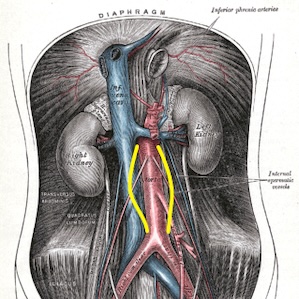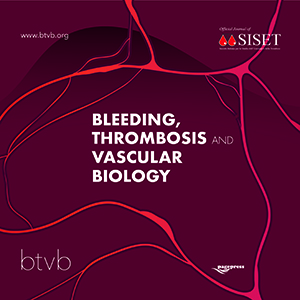Original Articles
Vol. 4 No. 2 (2025)
The role of dyslipidemia and gender-related risk factors in the management of patients with abdominal aortic aneurysms: a survey from the Italian Society of Angiology and Vascular Medicine and a call to action

Publisher's note
All claims expressed in this article are solely those of the authors and do not necessarily represent those of their affiliated organizations, or those of the publisher, the editors and the reviewers. Any product that may be evaluated in this article or claim that may be made by its manufacturer is not guaranteed or endorsed by the publisher.
All claims expressed in this article are solely those of the authors and do not necessarily represent those of their affiliated organizations, or those of the publisher, the editors and the reviewers. Any product that may be evaluated in this article or claim that may be made by its manufacturer is not guaranteed or endorsed by the publisher.
Published: 30 June 2025
884
Views
149
Downloads
Similar Articles
- CO47 | Genetic characterization of the KIV2 LPA polymorphism in subjects with bicuspid aortic valve with different clinical complications , Bleeding, Thrombosis and Vascular Biology: Vol. 4 No. s1 (2025)
- PO66 | Viscoelastic tests in disseminated intravascular coagulation associated with aortic aneurysm , Bleeding, Thrombosis and Vascular Biology: Vol. 4 No. s1 (2025)
- PO74 | Combined therapeutic approaches in a patient with hereditary hemorrhagic telangiectasia (HHT) and cardiovascular comorbidities , Bleeding, Thrombosis and Vascular Biology: Vol. 4 No. s1 (2025)
- CO13 | Genetic background in hypercholesterolemic patients framing cardiovascular risk , Bleeding, Thrombosis and Vascular Biology: Vol. 4 No. s1 (2025)
- CS04 | Association between elevated plasma levels of tissue plasminogen activator and occult cancer risk: a nested case-cohort analysis in 10,294 healthy subjects , Bleeding, Thrombosis and Vascular Biology: Vol. 4 No. s1 (2025)
- CO01 | Statin therapy for the prevention of venous thromboembolism in cancer patients: a systematic review and meta-analysis , Bleeding, Thrombosis and Vascular Biology: Vol. 4 No. s1 (2025)
- Rosina Albisinni, Tommaso Marrazzo, Arta Karruli, Sabrina Manduca, Giuseppe Nobile, Nicola Galdieri, Marisa De Feo, Successful treatment of aortic arch mural thrombosis with low-dose, ultra-slow-flow thrombolysis: a case report and literature review , Bleeding, Thrombosis and Vascular Biology: Vol. 1 No. 3 (2022)
- Robert Parambi, Nicole Ziliotto, Francesco Bernardi , Marcello Baroni , Richard W Browne , Dejan Jakimovski, Bianca Weinstock-Guttman, Robert Zivadinov, Murali Ramanathan, Crosstalk between hemostasis inhibitors and cholesterol biomarkers in multiple sclerosis , Bleeding, Thrombosis and Vascular Biology: Vol. 1 No. 3 (2022)
- Alice Lipari, Esmeralda Capristo, Antonietta Ferretti, Erica De Candia, Anticoagulation in obese patients: challenges and strategies , Bleeding, Thrombosis and Vascular Biology: Vol. 4 No. 3 (2025)
- CO26 | Relationship between SMAD3 variants and non-aortic cardiovascular features , Bleeding, Thrombosis and Vascular Biology: Vol. 4 No. s1 (2025)
1-10 of 37
Next
You may also start an advanced similarity search for this article.
Most read articles by the same author(s)
- Marco P. Donadini, Walter Ageno, Milvexian and other drugs targeting Factor XI: a new era of anticoagulation? , Bleeding, Thrombosis and Vascular Biology: Vol. 1 No. 1 (2022)
- Daniela Poli, Walter Ageno, Emilia Antonucci, Salvatore Bradamante, Eugenio Bucherini, Paolo Chiarugi, Antonio Chistolini, Benilde Cosmi, Anna Falanga, Antonio Insana, Domenico Lione, Rosa Maria Lombardi, Giuseppe Malcangi, Rossella Marcucci, Giuliana Martini, Lucilla Masciocco, Carmelo Paparo, Daniele Pastori, Simona Pedrini, Vittorio Pengo, Pasquale Pignatelli, Andrea Toma, Sophie Testa, Gualtiero Palareti, Management of anticoagulation in atrial fibrillation patients in Italy: insight from the Atrial Fibrillation-Survey on Anticoagulated Patients Register (AF-START) , Bleeding, Thrombosis and Vascular Biology: Vol. 2 No. 2 (2023)
- Gualtiero Palareti, Paolo Prandoni, Cristina Legnani, Emilia Antonucci, Serena Zorzi, Alberto Tosetto, Lorenza Bertù, Sophie Testa, Vittorio Pengo, Walter Ageno, Ida Martinelli, Benilde Cosmi, Eugenio Bucherini, Daniela Poli, Rationale and design of a study on D-dimer use to stratify patients after a first unprovoked venous thromboembolism for their risk of recurrence: extended low-dose Apixaban given only to patients with positive D-dimer results , Bleeding, Thrombosis and Vascular Biology: Vol. 1 No. 1 (2022)
- Anna Maria Gori, Eleonora Camilleri, Alessia Bertelli, Angela Rogolino, Francesca Cesari, Elena Lotti, Tommaso Capobianco, Walther Iannotti, Betti Giusti , Rossella Marcucci, Pleiotropic effects of anti-thrombotic therapies: have direct oral anticoagulants any anti-inflammatory effect? , Bleeding, Thrombosis and Vascular Biology: Vol. 1 No. 3 (2022)
- Giuseppe Camporese, Paolo Prandoni, Walter Ageno, Aspirin or low-molecular weight heparin for thromboprophylaxis after a fracture? That is the question , Bleeding, Thrombosis and Vascular Biology: Vol. 2 No. 2 (2023)
- Rossella Marcucci, Rosanna Abbate, What is the gender of thrombosis? A natural model of precision medicine , Bleeding, Thrombosis and Vascular Biology: Vol. 2 No. 3 (2023)
- Eleonora Petito, Anna Maria Mezzasoma, Emanuela Falcinelli, Chiara Conti, Erica De Candia, Raimondo De Cristofaro, Silvia Sorrentino, Gian Marco Podda, Mariangela Scavone, Anna Falanga, Marina Marchetti, Luca Barcella, Stefania Basili, Lucia Stefanini, Andrea Boccatonda, Laura Contino, Patrizia Sciancalepore, Igor Florio, Egidio Imbalzano, Rossella Marcucci, Angela Rogolino, Patrizia Noris, Marta Panella, Rita Santoro, Maria Costanza Turi, Gaetano Vaudo, Rosa Curcio, Paolo Gresele, Persistence of functional anti-PF4 antibodies and neutrophil activation in vaccine-induced immune thrombotic thrombocytopenia , Bleeding, Thrombosis and Vascular Biology: Vol. 4 No. 3 (2025)










